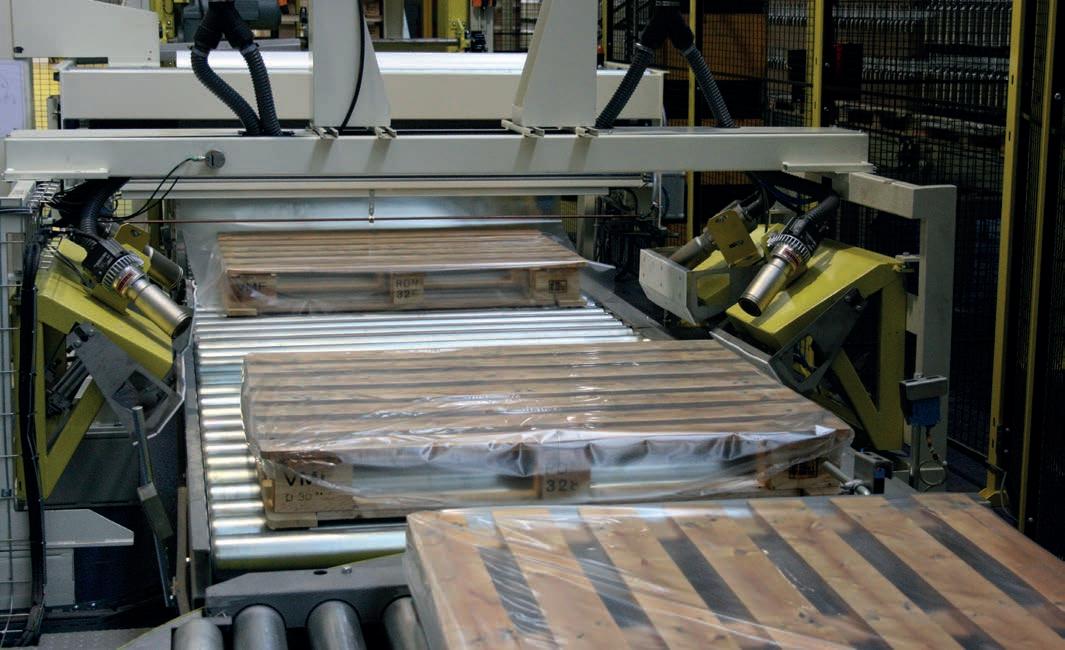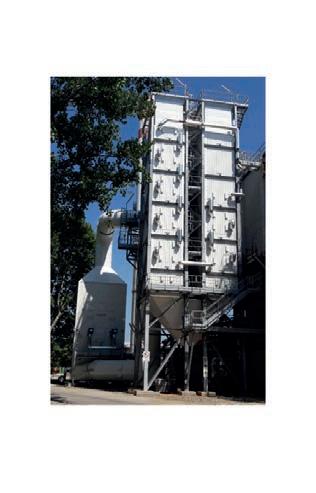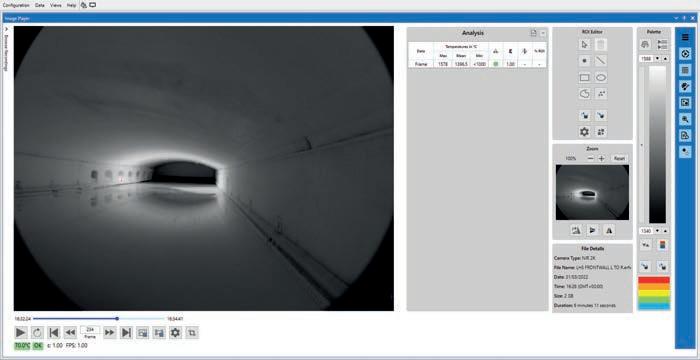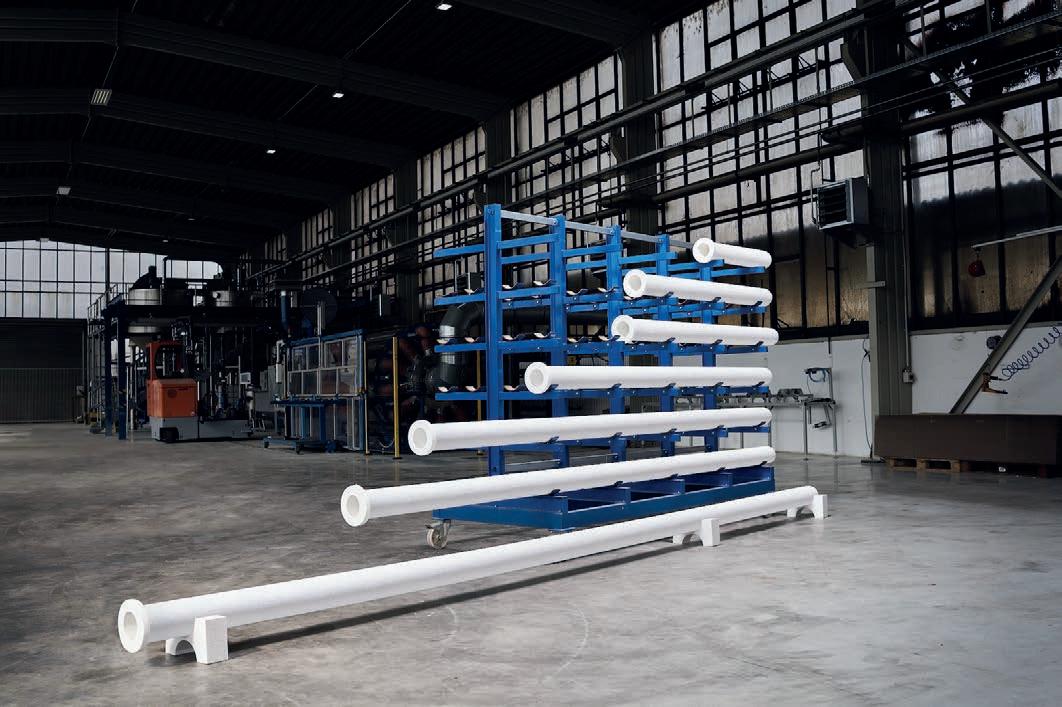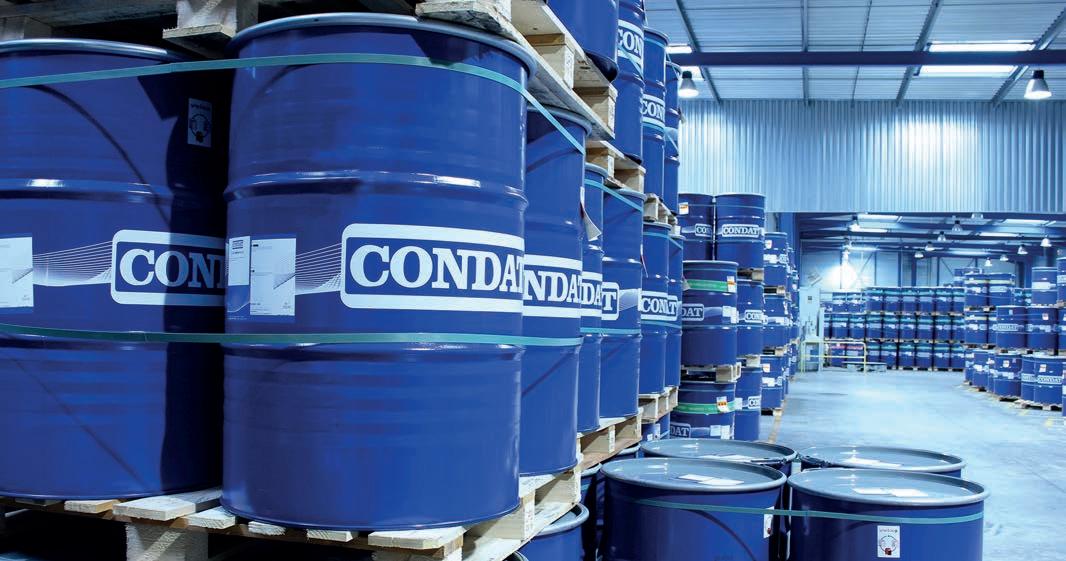
7 minute read
Glass Packaging: CETIE
Cetie e plores the benefits of sustainable glass packaging
Cetie has supported the glass packaging industry for over years providing technical reference documentation free of charge for its global audience. Josquin Peyceré* outlines how the organisation has begun to work on environmental issues.
Cetie supports the glass packaging industry in its quest for performance, rigour, and quality by defining specifications and harmonising good practices, both in the glass manufacturing process and in the filling and capping operations. More recently, Cetie has been called upon to work on environmental issues.
This year, the Cetie’s multidisciplinary working groups have made it possible to publish several reference documents, either in first edition or in revision and update, which are available free of charge to all users via its website.1
Food and beverages

In the field of Food & Beverages, the main new developments concern the simulation test of label separation in the glass recycling process (DT41.00), and the guides for metal caps: � FS16.00 - Pressure resistance test procedures for products bottled with aluminium screw caps. � GUIDELINES N°17 - Specifications for aluminium screw caps for wines and alcoholic beverages. � GUIDE N°11 - Metallic screw capping defects: identification and correction.
The crown finish, typically used on beer and unchanged for almost half a century, has seen a variant created. The GME13.10 (26 H 126 & 26 H 180 Crown Finishes - alternative “P” point) is an option with a less sharp “P-point” for the cap to crimp onto the finish than the classic model.
Josquin Peyceré, Cetie’s Secretary General for Glass Packaging.
This variant, which has been tested for several years in large-scale production, improves consumer safety when opening the cap. But it also requires excellent control of all the elements involved: � The bottle: geometry and surface finish � The liner under the cap: hardness � The cap itself: metal thickness
� The application of the closure onto the bottle finish, which must scrupulously respect the rules laid down in Cetie’s Guide n°4.
This variant of the finish was made official this year after multiple tests carried out within the Cetie framework to validate the range of possible dimensional tolerances. It complements the classic crown finish (defined by ISO12821 and 12822 standards), which remains the standard in cases where all the elements mentioned above are not under strict control or are likely to vary.
A new group has also been established at Cetie this year, dedicated to the reuse of glass containers. This group focuses on bottles and jars that can be reused through a complete loop (use, return, washing, filling and sale again), and will work in particular on the cleanliness and physical integrity requirements that may be expected before a reusable container is put back into circulation, with a view to an outsourced washing service (not integrated into the filling chain).
Harmonised perfumery solution
To reduce their environmental impact,
PUBLICATIONS

The list below is of Cetie’s publications from the last 12 months, which are all available on the Cetie website1 .
GLASS CONTAINERS FOR FOOD AND BEVERAGES
GME32.00 MCA FINISHES GME30.11 FINISH ALSECO-ALCOA 28 GME13.10 26 H 126 & 26 H 180 CROWN FINISHES - DIMENSIONS - ALTERNATIVE “P” POINT GME30.15 BVP & BVS MINIMUM THROUGH BORE DT09.00 FACTORS TO CONVERT THE MASS OF WATER (in g) TO TRUE VOLUME (in ml), AS RE UIRED B THE MEASURING CONTAINER DIRECTIVE (75 107 ECC)
DT12.00 GENERAL GUIDELINES FOR THE PREPARATION OF GLASS CONTAINERS UALIT SPECIFICATIONS
DT26.01 GLOSSAR OF GLASS CONTAINER VISUAL DEFECTS
DT33.00
IMPACT TEST DT19.00 RECESSED LABELLING SPOTTING BAR GME21.10 FLAVLOCK FINISHES 26 - 38 mm GUIDE N°11 METALLIC SCREW CAPPING DEFECTS - IDENTIFICATION AND CORRECTION
FS16.00
PRESSURE RESISTANCE TEST PROCEDURES FOR PRODUCTS BOTTLED WITH ALUMINIUM SCREW CAPS DT41.00 SIMULATION TEST OF THE LABEL SEPARABILIT IN THE GLASS REC CLING PROCESS Guidelines N° 2.01 PRESSURE SENSITIVE LABELING ON GLASS CONTAINERS GUIDELINES N°17 SPECIFICATIONS FOR ALUMINIUM SCREW CAPS FOR WINES AND ALCOHOLIC BEVERAGES
DT36.01 TEST METHOD ON GLASS FLACON DECORATIVE ELEMENTS - ABRASION TEST - LINEAR ABRASER GME40.20 FLACONNAGE - SUSTAINABLE NECK FINISHES: SCREW NECK WITHOUT ADDITIONAL BEAD GME40.25 FLACONNAGE - SUSTAINABLE NECK FINISHES: INTERCHANGEABLE SCREW NECK WITH ADDITIONAL BEAD GME40.30 FLACONNAGE - SUSTAINABLE NECK FINISHES: INTERCHANGEABLE CRIMPED FINISH WITH ADDITIONAL BEAD
DT15.55
DT37.00 FLACONNAGE - TESTING PROCEDURE: VERTICALIT TEST METHOD ON GLASS FLACON DECORATIVE ELEMENTS - RESISTANCE TO BULK
Glass container production line. Copyright: Shuttershock.
perfumers have been confronted in recent years with the need to offer the consumer, in addition to the traditional “carnette” finish (flange finish) that receives a permanently crimped pump, a screw finish that allows the bottle to be refilled. Until now, of course, both types of finish have existed. But to make the two finish models live on the same bottle model required to create all the accessories (pump, pump cover, cap) in duplicate.
The perfumers therefore asked their bottle and pump suppliers to design a solution that would allow them to share the accessories and harmonise this solution to avoid each one having its own specific solution. This design was carried out at Cetie and, after cross-testing, resulted in a series of finishes with diameters of either 13, 15 or 17 mm, with closure elements compatible between the crimp version (carnette) and the screw cap version.
These designs are free of charge, which allows the sector to limit the need for R&D, and to offer all the market players who have not yet switched to this type of finish the possibility of implementing the standard directly. � GME40.20 – Flaconnage - sustainable neck finishes: screw neck without additional bead. � GME40.25 – Flaconnage - sustainable neck finishes: interchangeable screw neck with additional bead. � GME40.30 – Flaconnage - sustainable neck finishes: interchangeable crimped finish with additional bead.
International audience
Cetie’s documents have a wide range of audiences. Some are intended for uality Managers or Development Directors, others are intended to be used directly by line technicians or even operators. To ensure that these documents are






available to as many people as possible, Cetie is making an unprecedented effort to translate its documents.
In the last year, 34 translations have been carried out, mainly into German and French, but the first translations into Spanish have also begun. Some glossaries are even published in six languages. This means that a quarter of the world’s population will be able to read Cetie documents in their own language.
Revisions
Document updates have also been important in recent months. Although some of these updates are improvements to the clarity of the content or readability, some of them are also major redesigns of the document. For example, the “MCA 28 mm” series of glass finishes for metal or plastic closures for carbonated beverages has been extensively revised.
The working group has kept the nine existing finish versions, but has harmonised certain dimensions between the different versions and clarified certain points, such as the precise definition of the finish height. Finally, the nine versions are grouped in a single document, and this single document will be proposed to European standardisation to replace the five existing standards.
Challenges
Regulatory developments, such as the laws on recycling or reuse, or the replacement of Directive 94 62 - Packaging & Packaging Waste (replacement to be published this year), require the sector to adapt in the best possible way, i.e. via solutions discussed and optimised by the consensus of the various players.
Cetie’s international profile allows its members to benefit more widely from the experience of other colleagues or customers or suppliers. This sharing of expertise requires listening, rigour, but also responsiveness and agility. When a question cannot be answered immediately, test plans are launched, the results are shared, and conclusions are drawn together. This may require very close meetings. The Cetie team adapts the means and resources according to the urgency of the subject expressed by the working group.
The team is also on the lookout for any question from anywhere in the world that could feed the group’s reflection, thanks to an online chat that is accessible to all: members, recurrent users of the website, or simple visitors arriving on the site for the first time. The dozens of documents currently being prepared testify to the enthusiasm generated by this type of collaborative work. �

References:
1.https: www.cetie.org en the-cetiesdocumentary-database 122.html
*Secretary General for Glass Packaging, Cetie, Paris, France www.cetie.org


Automatic Chutes SCRAPER CONVEYORS



CULLET CRUSHERS


vidromecanica@vidromecanica.com www.vidromecanica.com




